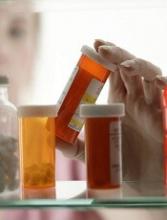Drugs that are promoted most heavily in the US are less likely than the top-selling drugs and the top-prescribed drugs to provide “health value,” according to researchers.
The top-promoted drugs were less likely than either or both of the other drug types to demonstrate safety and effectiveness, be affordable, represent a genuine advance in treating a disease, be included on the World Health Organization’s (WHO) list of essential medicines, or be recommended as a first-line treatment.
Among the top-promoted drugs were 4 anticoagulants—Eliquis (apixaban), Xarelto (rivaroxaban), Brilinta (ticagrelor), and Pradaxa (dabigatran).
Tyler Greenway and Joseph S. Ross, MD, both of Yale University School of Medicine in New Haven, Connecticut, conducted this research and reported their findings in The BMJ.
The researchers set out to assess the “health value” of the drugs most aggressively promoted to physicians to better understand the implications of pharmaceutical promotion for patient care.
The team identified the 25 medicinal products associated with the largest total payments to physicians and teaching hospitals from August 2013 to December 2014.
This included all direct and indirect payments, such as speaker fees for education lectures, consulting fees, and honoraria, as well as payments in kind, such as the value of food and gifts. However, research payments, royalties, and licensing fees were excluded, as these are typically not promotional.
The researchers also determined the 25 best-selling medicinal products by 2014 US sales and the 25 most-prescribed drugs in the US during 2013.
One of the 25 top-promoted products was excluded because it was used to test for adrenocortical function. And 1 of the 25 top-selling products was a pneumococcal vaccine, which was also excluded.
Four of the 24 top-promoted drugs (17%) were also among the top-selling drugs—adalimumab, glatiramer, aripiprazole, and budesonide-formoterol. But none of the top-promoted drugs were among the top-prescribed drugs.
Among the top-selling drugs were several used in the field of hematology—Rituxan (rituximab), Neulasta (pegfilgrastim), Neupogen (filgrastim), Revlimid (lenalidomide), and Gleevec (imatinib mesylate).
Results
The researchers estimated the drugs’ value to society using 5 proxy measures:
- Innovation—drugs that were first-in-class or provided a “meaningful advance” over existing treatments
- Effectiveness and safety—assessed using the ratings systems of the French drug industry watchdog Prescrire International
- Generic availability—a measure of affordability
- Clinical value—inclusion on the WHO list of essential medicines in 2015
- First-line status—being recommended as a first-line therapy.
The top-promoted drugs were significantly less likely to be considered innovative than the top-selling drugs (33% vs 72%, relative risk [RR]=0.46, P=0.01). However, the difference was not significant for the top-promoted and top-prescribed drugs (33% vs 52%, RR=0.64, P=0.25).
The top-promoted drugs were significantly less likely to be considered possibly helpful or advantageous according to Prescrire ratings than the top-prescribed drugs (19% vs 76%, RR=0.25, P<0.001). But the difference was not significant for the top-promoted and top-selling drugs (19% vs 44%, RR=0.43, P=0.11).
Generic equivalents were available for 62% of the top-promoted drugs, 32% of the top-selling drugs (RR=1.95, P=0.05), and 100% of the top-prescribed drugs (RR=0.63, P<0.001).
The top-promoted drugs were significantly less likely than either of the other drug types to be on the WHO essential medicines list. One of the top-promoted drugs was on the list, compared to 9 top-selling drugs (RR=0.12, P=0.01) and 14 top-prescribed drugs (RR=0.07, P<0.001).
The top-promoted drugs were significantly less likely to be recommended as first-line treatments than the top-prescribed drugs (33% vs 80%, RR=0.42, P=0.001). But the difference was not significant for the top-selling drugs (33% vs 60%, RR=0.56, P=0.09).
The researchers said these results raise concerns about the purpose of pharmaceutical promotion and its influence on patient care. They believe efforts are needed to better evaluate the value of drugs, ensuring this information is readily available at the point of care so it can inform clinical decision-making and promote the use of higher-value medicines.
The researchers also suggested that clinicians consider taking steps to limit their exposure to industry promotion and consider engaging with non-commercial educational outreach programs that provide evidence-based recommendations about medication choices.


